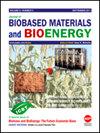Application of Substrate Materials Derived from Plant Roots, Stems, Leaves, and Microbes for Remediation of Soil Heavy Metal Pollution
IF 0.5
4区 医学
引用次数: 0
Abstract
This study focuses on the remediation of chromium (Cr), a heavy metal, in soil using substrate materials synthesized from plant roots, stems, leaves, and microbes. Corn was chosen as the source material for biochar production through high-temperature pyrolysis of corn roots, stems, and leaves. The biochar was then modified with an iron solution, and microbial adsorption was employed to remediate heavy metal Cr in the soil. The study involved physical and infrared analyses of the substrate materials and experiments to determine the adsorption contribution of different pH conditions, sites, and substrate materials to metal Cr. The effectiveness of plant roots, stems, leaves, and microbial combinations in remediating soil heavy metal pollution was verified. The experimental results demonstrate a decrease in the Zeta potential values of both materials as the pH increases. Moreover, as pH gradually increases, the form of Cr ions changes, and the reproductive ability of microbes weakens. The substrate materials exhibit a notable increase in negative charge, leading to enhanced repulsion towards Cr, which impacts their adsorption performance. At neutral pH, the adsorption capacity of the substrate materials for Cr is enhanced. The contribution rate of the composite substrate materials in the adsorption process is 6.78%, while that of microbial organisms is 56.45%, significantly higher than that of Fe-CBC. The main reason is that microbial adsorption activity for Cr is enhanced under higher pH conditions, with the contribution rate of microbial organisms continuing to increase significantly at a pH of 9.应用从植物根、茎、叶和微生物中提取的基质材料修复土壤重金属污染
本研究的重点是利用由植物根、茎、叶和微生物合成的基质材料修复土壤中的重金属铬(Cr)。通过高温热解玉米的根、茎和叶,选择玉米作为生产生物炭的原料。然后用铁溶液对生物炭进行改性,并利用微生物吸附来修复土壤中的重金属铬。研究包括基质材料的物理和红外分析,以及确定不同 pH 值条件、地点和基质材料对金属铬的吸附作用的实验。验证了植物根、茎、叶和微生物组合在修复土壤重金属污染方面的有效性。实验结果表明,随着 pH 值的增加,两种材料的 Zeta 电位值均有所下降。此外,随着 pH 值的逐渐升高,铬离子的形态也会发生变化,微生物的繁殖能力也会减弱。基底材料的负电荷明显增加,导致对铬的排斥力增强,从而影响其吸附性能。在中性 pH 值下,基底材料对铬的吸附能力增强。复合基底材料在吸附过程中的贡献率为 6.78%,而微生物的贡献率为 56.45%,明显高于 Fe-CBC。主要原因是在较高的 pH 值条件下,微生物对铬的吸附活性增强,在 pH 值为 9 时,微生物的贡献率继续显著增加。
本文章由计算机程序翻译,如有差异,请以英文原文为准。
求助全文
约1分钟内获得全文
求助全文

 求助内容:
求助内容: 应助结果提醒方式:
应助结果提醒方式:


